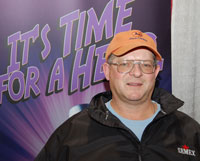Milk proteins could be more effective than carbohydrates at aiding fluid retention after exercise, according to new research from the British Journal of Nutrition.
The study suggests that a replacing 25 grams per liter of carbohydrate with milk protein in standard carbohydrate-electrolyte sports drink can improve the rehydration ability of the drink by improving fluid retention.
“The results of the present investigation indicate that, when matched for energy density, fat content and electrolyte concentration, a carbohydrate–milk protein solution is better retained than a carbohydrate solution after exercise-induced dehydration,” wrote the researchers, led by Dr Gethin Evans from the Manchester Metropolitan University in the UK.
Rehydration after exercise has been well investigated, with previous research showing that for complete recovery of fluid balance, both the volume and composition of a rehydration fluid are vital.
It is known that the volume of the fluid consumed must be greater than the volume of sweat lost, and account for ongoing – post exercise – fluid losses. However, for the effective, long term, maintenance of fluid balance the composition of the fluid is also of critical importance.
On top of the addition of electrolytes, such as sodium and potassium, to rehydration fluids, the consumption of solutions containing protein has been suggested to offer advantages in terms of fluid retention. With previous research demonstrating that low-fat milk containing proteins is brought about better fluid retention than either a carbohydrate–electrolyte sports drink or water.
The new study investigated these findings in more details, examining the effects of milk proteins on rehydration after exercise in the heat.
The results observed that a solution made up of 40 grams per litre of carbohydrate and 25 grams per litre of milk protein was offered better fluid retention than a 65 gram per litre carbohydrate solution – as a post exercise rehydration drink.
The researchers stated that their research suggests that “gram for-gram, milk protein is more effective at augmenting fluid retention than carbohydrate.”
Source: British Journal of Nutrition
“Effect of milk protein addition to a carbohydrate–electrolyte rehydration solution ingested after exercise in the heat”
Authors: L.J. James, D. Clayton, G.H. Evans
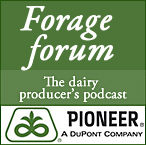 On this edition of Forage Forum, Kyle Whitaker, Pioneer Hi-Bred marketing manager for forage additives, highlights the Pioneer fiber technology platform. Whitaker discusses the benefits of using a crop-specific inoculant during an interview with Chuck Zimmerman at the recent Farm Progress Show.
On this edition of Forage Forum, Kyle Whitaker, Pioneer Hi-Bred marketing manager for forage additives, highlights the Pioneer fiber technology platform. Whitaker discusses the benefits of using a crop-specific inoculant during an interview with Chuck Zimmerman at the recent Farm Progress Show.
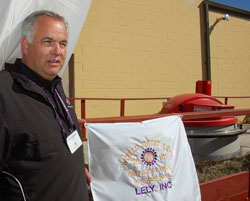 A brand new
A brand new 




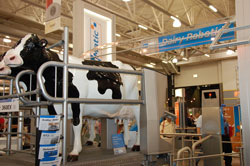 When the exhibit judges saw what
When the exhibit judges saw what 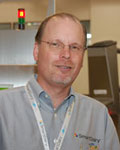 The Robotic Post Milking Spray System was quite an attention-getter at the expo. “After the cow is milked, this system will apply teat dip automatically and consistently as the cows come through the system,” says BouMatic’s John Mansavage, who says the machine can take the place of three full time employees on a commercial dairy.
The Robotic Post Milking Spray System was quite an attention-getter at the expo. “After the cow is milked, this system will apply teat dip automatically and consistently as the cows come through the system,” says BouMatic’s John Mansavage, who says the machine can take the place of three full time employees on a commercial dairy.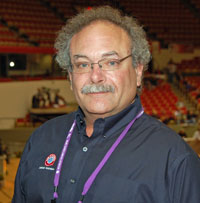 At World Dairy Expo this year,
At World Dairy Expo this year, 
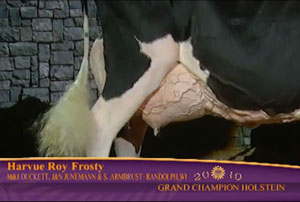 One of the titles that two-time World Dairy Expo Supreme Champion Harvue Roy Frosty holds is “Best Udder” and she is certainly well-endowed, as well as being very productive. At five years and seven months, in 365 days, she produced 44,713 pounds of milk with a five percent test, 2,222 lbs of fat, a 2.8 percent protein at 1,248 lbs.
One of the titles that two-time World Dairy Expo Supreme Champion Harvue Roy Frosty holds is “Best Udder” and she is certainly well-endowed, as well as being very productive. At five years and seven months, in 365 days, she produced 44,713 pounds of milk with a five percent test, 2,222 lbs of fat, a 2.8 percent protein at 1,248 lbs.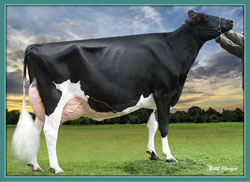 1. Why is the cow’s tail groomed to look like a French poodle? Whoever teased that cow’s tail is welcome to come over and do my hair ANYTIME….
1. Why is the cow’s tail groomed to look like a French poodle? Whoever teased that cow’s tail is welcome to come over and do my hair ANYTIME….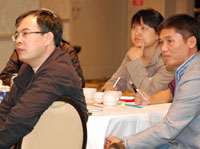 According to the official attendance figures from
According to the official attendance figures from 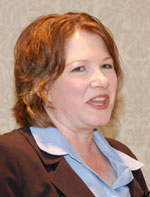 Stephanie just returned from a tour of five different countries in Eastern Europe with a group called
Stephanie just returned from a tour of five different countries in Eastern Europe with a group called 